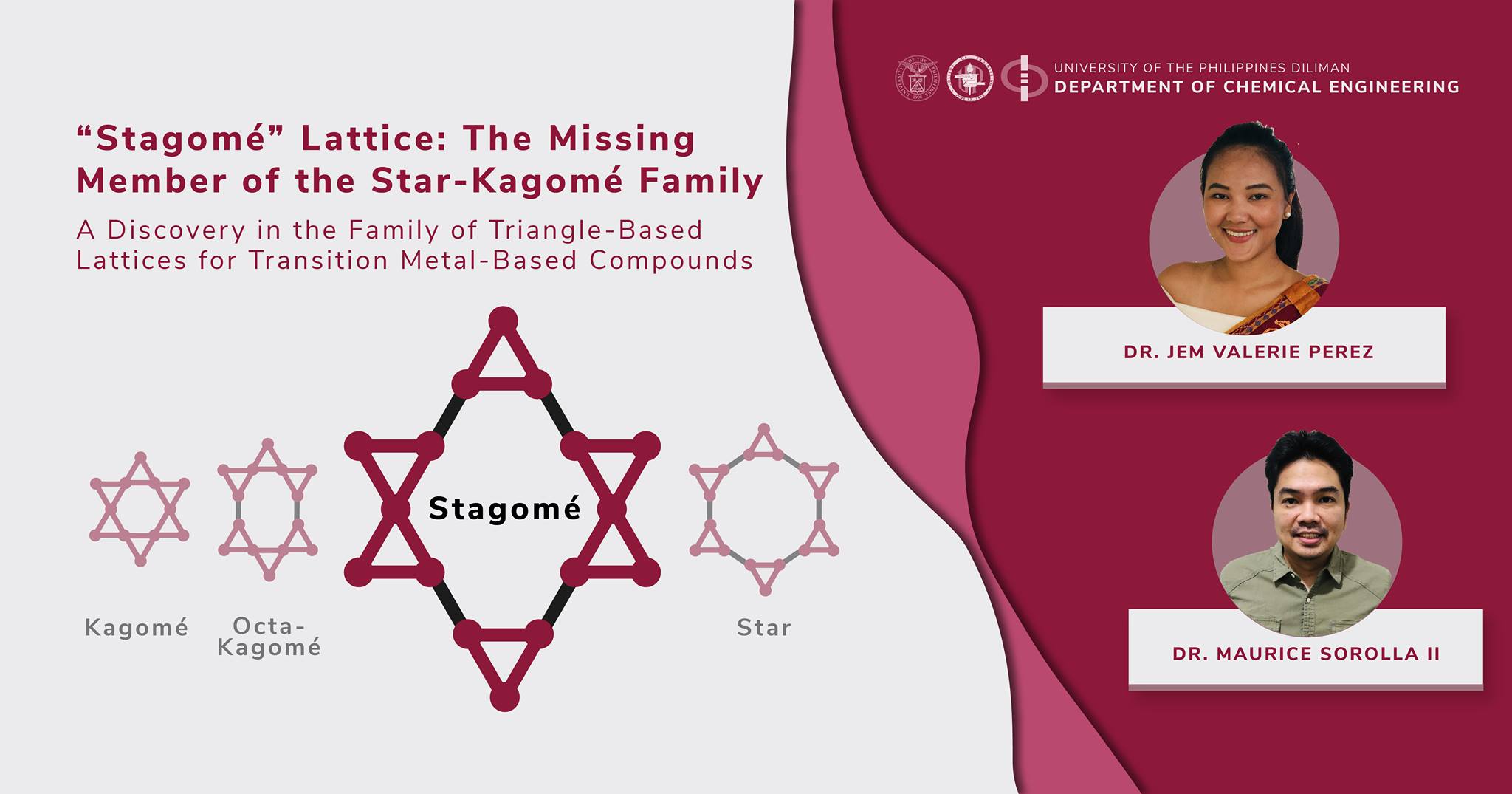DChE Faculty Couple Discovers Missing Link in the Star-Kagomé Family of Triangle-Based Lattices for Transition Metal-Based Compounds
Real-life DChE faculty couple, Dr. Jem Valerie Perez and Dr. Maurice Sorolla II, heads of the Department’s Nanotechnology Research Laboratory and Inorganic Synthesis Laboratory, respectively, successfully synthesized a groundbreaking inorganic compound. With the help of their research collaborators from the University of Houston, their study details the serendipitous synthesis of a compound with a novel lattice structure, which they dubbed as “stagomé”, a portmanteau of star and kagomé. The research was a result of the postdoctoral fellowship of Dr. Perez in the US, which was funded by the ERDT Fellowship of DOST-SEI.
The stagomé is the newest discovery in a family of lattices comprising an array of metal centers and featuring geometrically frustrated triangles; the other previously discovered structures are called kagomé, octa-kagomé, and star. Distinctions between the members of this lattice family are made by the number of shared vertices per triangle: the kagomé has three, octa-kagomé has two, and the star has none. The heretofore undiscovered structure with triangles sharing one vertex is the stagomé.
Specific properties of the compound with the structure, [(CH3)2NH2]2[CoII5(OH)2(HCOO)6(SO4)2]·2H2O, discussed include the interesting magnetic and heat capacities, as well as qualitative descriptions of the layered compound’s magnetic exchange interactions. The researchers note that the applications that can be made from the magnetic behavior of this group of materials warrant further exploration.
For more details, you can read the full article from the Chemistry of Materials journal at the ACS Publications Homepage: https://doi.org/10.1021/acs.chemmater.1c00070

